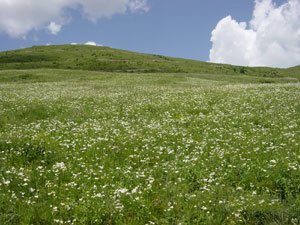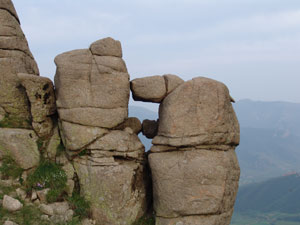Chicheng county – Beijing's backyard
Updated: 2012-07-20 13:38
By Sun Chi (chinadaily.com.cn)
|
|||||||||||
|
 |
Chicheng county is located 180 kilometers north of the capital, Beijing, and covers 5,287 square kilometers. Chicheng, or red city, gets its name from the red iron-rich earth in the county.
Away from excessive development, many scenic spots in the county are seldom visited by outsiders, and are well-preserved in their original forms, including natural mineral fountains, primeval forest, high mountain meadows and glacial vestiges. If you are tired of hot tourism destinations congested by sightseers, Chicheng county may be a better alternative for pursuing a peaceful and cooler summer getaway.
Water therapy: Tang Quan Fountain
|
 |
The fountains were discovered more than 2,000 years ago during the Han Dynasty (206 BC- AD 220). Temples and palaces were destroyed and built again throughout different ancient periods.
|
|
|
the bathing site of Empress Dowager Xiaozhuang during the Qing Dynasty(1662~1722) |
|
|
|
A vistor collects fountain water at Tang Quan Fountain in Chicheng county, Hebei province on July 19, 2012. |
Emperor Kangxi during the Qing Dynasty(1662~1722)came and stayed to enjoy the fountains for 51 days when he accompanied his mother, Empress Dowager Xiaozhuang, in 1672. You can find Tang Quan fountain 7.5 km west of Chicheng county's central district.
Cooler world: Bing Shan Liang glacial vestige
 |
Bing Shan Liang glacial vestige is one of the best places to get away from the heat near Beijing. The average temperature in July is 18.8 C, owing to its 2,211-meter altitude. Snow will not melt until June. The vestige was formed during the last ice age, 10,000 years ago, but it is now covered with grass and all kinds of flowers. Bing Shan Liang is located 45 km north of the county's central district. This place is definitely designed for hikers and amateur photographers.
 |
 |
 |
Temple in the sky: Chao Yang Guan Temple
Chao Yang Guan is a temple that hangs high in the sky. It was constructed on a huge stone from 1553 to 1557 during the Ming Dynasty (1368-1644). Workers dug caves as halls for displaying sages’ sculptures, such as Lao Zi and Confucius, on a vertical surface of a sharp stone 600 meters high. The temple consists of more than 10 caves where thousands of sculptures were carved into the cave walls 500 meters above the foot of the stone.
Today's Top News
President Xi confident in recovery from quake
H7N9 update: 104 cases, 21 deaths
Telecom workers restore links
Coal mine blast kills 18 in Jilin
Intl scholarship puts China on the map
More bird flu patients discharged
Gold loses sheen, but still a safe bet
US 'turns blind eye to human rights'
Hot Topics
Lunar probe , China growth forecasts, Emission rules get tougher, China seen through 'colored lens', International board,
Editor's Picks

|

|

|

|

|

|







